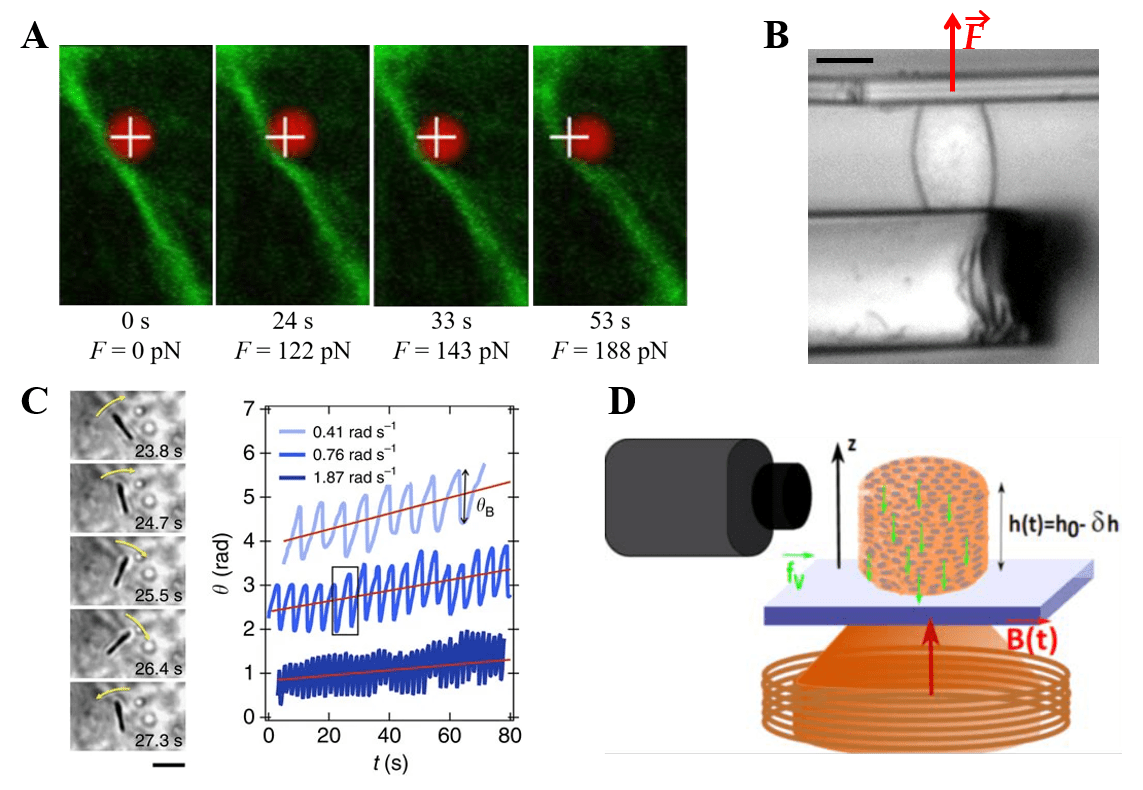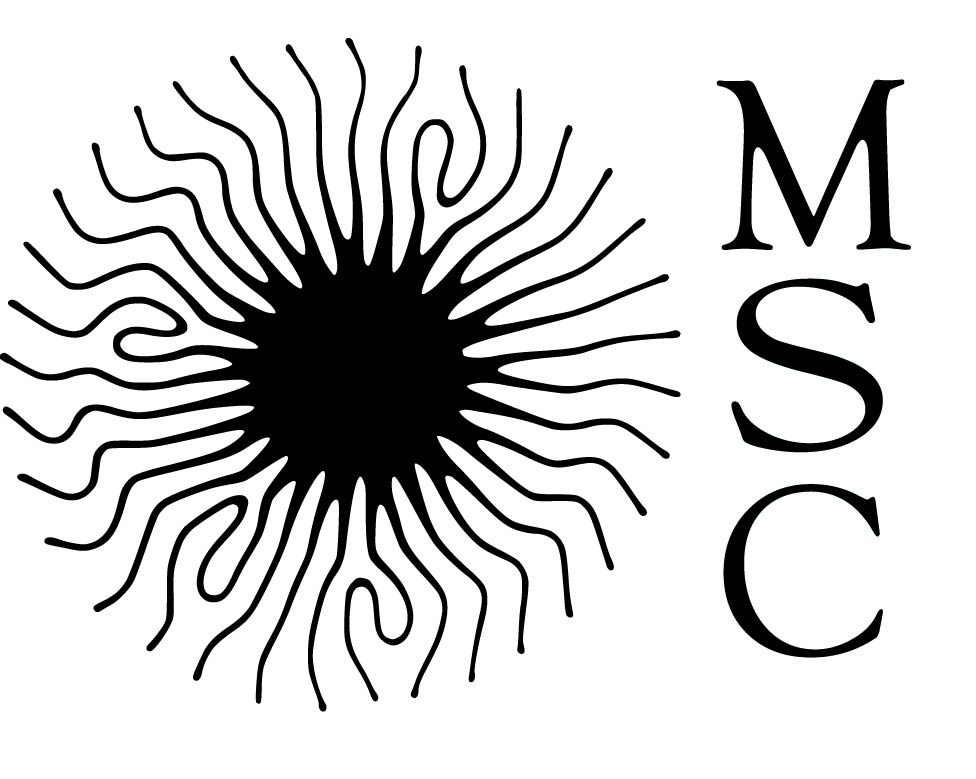Cellular rheology: from intracellular to tissue scale
To characterize the mechanical properties of cells, we have set up a rich array of rheometers that enable us to work on a variety of spatial scales, from intracellular to multicellular, and on time scales ranging from a fraction of a second to several days.
These devices also enable us to characterize the biological response of living systems to controlled mechanical stress.
Members
- Atef Asnacios, Professeor (UPCité)
- Sophie Asnacios, Senior Lecturer (Sorbonne Université)
- Jean-François Berret, Research Director (CNRS)
- Sylvie Hénon, Professor (UPCité)
- Pauline Durand, Senior Lecturer (UPCité)
- Jean-Baptiste Manneville, Research Director (CNRS)
- Myriam Reffay, Senior Lecturer (UPCité)
- Alain Richert, Engineer (CNRS)

A. Optical clamp rheometer. Vimentin intermediate filament deflection experiment (green) in a living cell. A fluorescent bead (red) 2 μm in diameter was internalized in the cell and then trapped by an optical tweezer (white cross), allowing a force to be applied.
B. Single-cell rheometer. A cell is stretched between two glass micro-lamellae. Scale bar: 20 μm.
C. Rheometry by rotational magnetic spectroscopy. Images of a 2.8 μm magnetic nanowire internalized in a fibroblast and subjected to a rotating magnetic field. Above a critical frequency, after rotation in the direction of field rotation (clockwise), the wire rapidly returns to counter-clockwise motion, indicating that wire rotation is impeded. Scale bar: 2 μm.
D. Magnetic rheometer. A multicellular magnetic aggregate is stimulated by an electromagnet, offering a wide range of possible stimulations. Surface deformations are then recorded and the elastic modulus of the aggregate can be measured.
